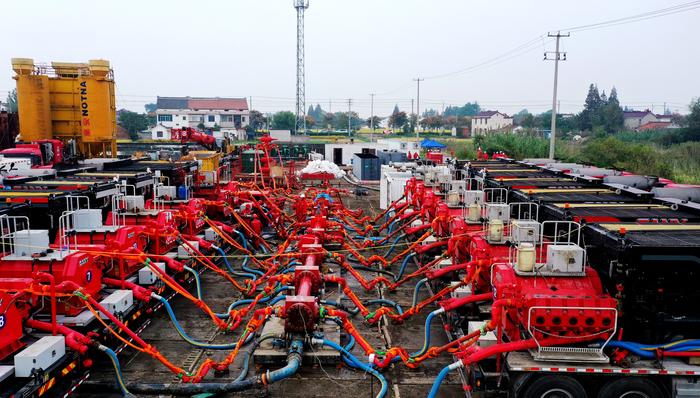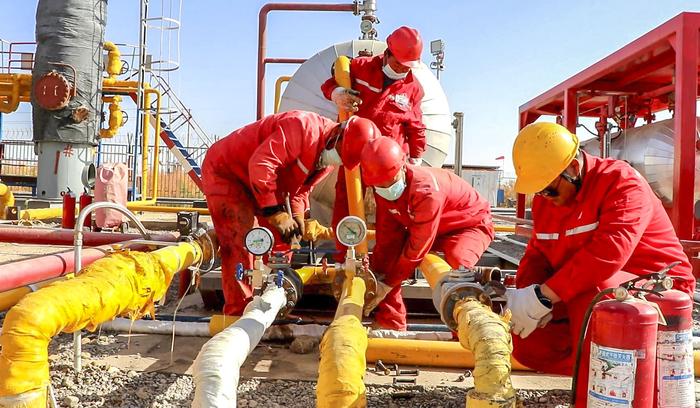|
| 2020-10-27 来源: 中国石化新闻网 |
| 石化新闻 |
中国石化新闻网讯 据油价网2020年10月19日伦敦报道,在全球油气行业在紧急修订预算和大幅削减投资的过程中大幅削减开支的一年里,一些分析师现在预计,至少在海上,这条隧道的尽头将出现曙光。挪威著名能源研究和商业情报公司雷斯塔能源公司(Rystad)预计,从明年开始,海上油气投资将出现反弹,但海上油气投资将出现结构性转变,其中近一半投资将流向浮式生产和储存。10月早些时候,Rystad报告称,中国的造船企业正在准备迎接从明年开始的浮式产油、储油和卸油船(FPSO)新订单的增加。这一增加意味着全球海上油气勘探和生产正在回升。事实上,Rystad的分析师表示,未来5年内,能源行业40%的新造船将是FPSO。Rystad的分析师没有预测新设施的总数以及与前几年的比较。 与此同时,银行正如他们所做的那样对油价的预测常常出现分歧。例如,高盛银行表示,该行预计明年布伦特原油价格将反弹至每桶65美元,而摩根士丹利银行表示,明年布伦特原油价格将难以突破每桶50美元的关口。高盛银行预测新冠病毒疫苗将在2021年春季上市,另一方面,摩根士丹利银行指出,过去几年美国石油和天然气产量的激增是其相对悲观预测的原因之一。另一个原因更为重要:投资者的投资重点发生了转变。 环保投资正受到越来越多的关注。银行正在跟随这股潮流,制定他们自己的议程,其中包括激励客户减少自身的碳足迹,并寻求使自己的业务更加环保。大多数时候,这意味着减少对石油和天然气的投资。而减少对石油和天然气的投资和贷款将意味着油气行业的复苏将放缓。 《休斯顿纪事报》的资深记者保罗?高桥最近特别为海上石油工业撰文,谈到企业如何在5年内被两次油价危机所扼杀,而现在,最重要的是新冠病毒疫情,它正在对石油需求造成混乱。深水钻井尤其受到当前环境的威胁,而投资者对可再生能源的兴趣日益增长也对石油工业不利。 保罗援引IHS Markit海上钻机市场咨询主管汤姆·凯洛克的话表示:“如果油气公司由于长期风险和项目的绝对成本而远离深水,我不会感到惊讶。”“由于环境变得更加不确定,我们可以看到有向更多浅水区发展的趋势。” 今年早些时候,人们乐观地认为,解除封城锁国的措施将刺激石油需求和价格,并基本上推动油价回归正常。但4个月以后,没有人再相信全球经济会迅速复苏。就连欧佩克事实上的领导者和最大产油国沙特阿拉伯——这个无论实际基本面如何几乎总是看好石油的国家——现在也采取了更加谨慎的立场。根据高盛银行的计算,沙特阿拉伯最新的预算计划是基于布伦特原油每桶50美元的价格。尽管这个价格比目前的价格要高,但也远低于利雅得希望看到的作为预算计划基础的价格。 就连Rystad在对海上支出的乐观预测中也指出,“虽然预算更高,但在成本方面将相当谨慎。” 如果欧佩克+成员国将减产幅度维持在770万桶/天,那么,这种谨慎将很可能限制欧佩克+成员国持续减产可能导致的任何潜在石油和天然气支出的改善。” 目前全球需求的状况已被证明糟糕透了。有报道称,尽管欧佩克+最初的计划要求从明年1月起再日减200万桶的原油产量,但沙特阿拉伯正在考虑延长目前的减产数量。大宗商品交易商似乎都相信,目前全球仍有大量的石油库存。尽管就在几个月前,他们中的一些人还持乐观态度,但现在,所有大宗商品交易巨头都不认为油价会在未来6至9个月内出现实质性改善。他们预计,至少到2021年6月,油价将继续徘徊在每桶40美元左右。 但是,现在的情况变得更糟。正是这些大宗商品交易商正在向可再生能源项目投入数十亿美元。英国《金融时报》9月底报道,摩科瑞、贡沃尔、维多和托克正急于扩大其在替代能源领域的业务。 摩科瑞首席执行官马可?杜南在英国《金融时报》大宗商品全球峰会上表示:“未来5年,我们应将大约50%的投资投向可再生能源。” 如果大宗商品交易商和欧洲大型石油公司一起跳上可再生能源的大车,那么即使明年海上支出反弹,石油工业的未来可能比现在看起来更成问题。 李峻 编译自 油价网 原文如下: Offshore Oil & Gas Poised For A Major Rebound In a year marked by huge spending cuts across the oil and gas industry amid urgently revised budgets and slashed investments, some analysts are now expecting a light at the end of this tunnel, at least offshore. From next year, Rystad Energy expects offshore oil and gas investments to rebound, but there will be a tectonic shift, with nearly half of that investment going to floating production and storage. Earlier this month, Rystad reported that Chinese shipyards are preparing for an increase in new orders for floating production, storage, and offloading vessels beginning next year. This increase would mean that offshore oil and gas exploration and production were on the rebound. In fact, Rystad’s analysts said that over the next five years, 40 percent of newbuilds for the energy industry would be FPSOs. They stopped short of forecasting what the total of new facilities would be and how it compares with previous years. Banks, meanwhile, diverge on their oil price forecasts, as they often do. Goldman Sachs, for example, said it expected Brent to rebound to $65 a barrel next year while Morgan Stanley said the benchmark would struggle to break the $50 threshold. Goldman motivated its forecast with the expectation that coronavirus vaccines would become available by spring 2021. Morgan Stanley, on the other hand, pointed to the surge in U.S. oil and gas production from the past few years as one reason for its relatively bearish forecast. The other reason was more important: a shift in investor priorities. Environmentally responsible investing is drawing more and more attention. Banks arefollowing the tide and making their own agenda, which involves motivating their clients to reduce their own carbon footprint and also seeking to make their own operations more environmentally sound. This, most of the time, means less investment in oil and gas. And less investment—and lending—to oil and gas would mean a slower rebound for the industry. In offshore oil, specifically, the Houston Chronicle’s Paul Takahashi recently wrote how companies were being stifled by two oil price crises in five years and now, on top of those, the coronavirus, which was wreaking chaos on oil demand. Deepwater drilling was particularly threatened by the current environment, and investors’ growing appetite for renewable energy exposure was not helping, either. “I wouldn’t be surprised if companies are going away from deep water because of the long-term risks and the absolute cost of projects,” Takahashi quoted Tom Kellock, head of offshore rig market consulting for IHS Markit, as saying. “As the environment becomes more uncertain, we could see a trend to more shallow water.” Earlier this year, there was some optimism that the lifting of national lockdowns would stimulate oil demand, prices, and basically drive a return to normal. Four months later, nobody believes in a quick recovery anymore. Even Saudi Arabia—OPEC’s de facto leader and biggest producer—the country that is almost always bullish about oil whatever the actual fundamentals, has now taken a warier stance. The latest budget plan of the Kingdom, according to Goldman calculations, was based on a Brent price of $50 a barrel. Although quite higher than current prices, it is also a lot lower than what the rulers in Riyadh would have liked to see as the basis for their budget plans. Even Rystad, in its otherwise bullish forecast about offshore spending, notes that “While higher, budgets will be quite cost-wary.” This wariness will likely limit any potential improvement in spending on oil and gas that might result from the continued curbs on production among OPEC+ members, provided they do keep the curbs at the current rate of 7.7 million bpd of their combined output. The situation with demand is bad enough to warrant it. There have already beenreports that Saudi Arabia is considering an extension of the current rate of cuts despite the fact the original plan calls for easing another 2 million bpd from January. Commodity traders seem to share the belief that there is still too much oil around. While some of them were optimistic just a couple of months ago, now none of the commodity trading majors expect a material improvement in oil prices over the next six to nine months. They expect it to continue hovering around $40 a barrel, at least until June 2021. And it gets worse. The very same commodity traders are pouring billions into renewable energy projects. The Financial Times reported in late September that Mercuria, Gunvor, Vitol, and Trafigura are in a rush to expand their presence in alternative energy sources. “Over the next five years we should have about 50 per cent of our investments into renewables,” Mercuria’s CEO Marco Dunand told the FT Commodities Global Summit. If commodity traders are jumping on the renewable bandwagon alongside European Big Oil, the future of the oil industry may be even more problematic than it appears right now, even if offshore spending rebounds next year. |








